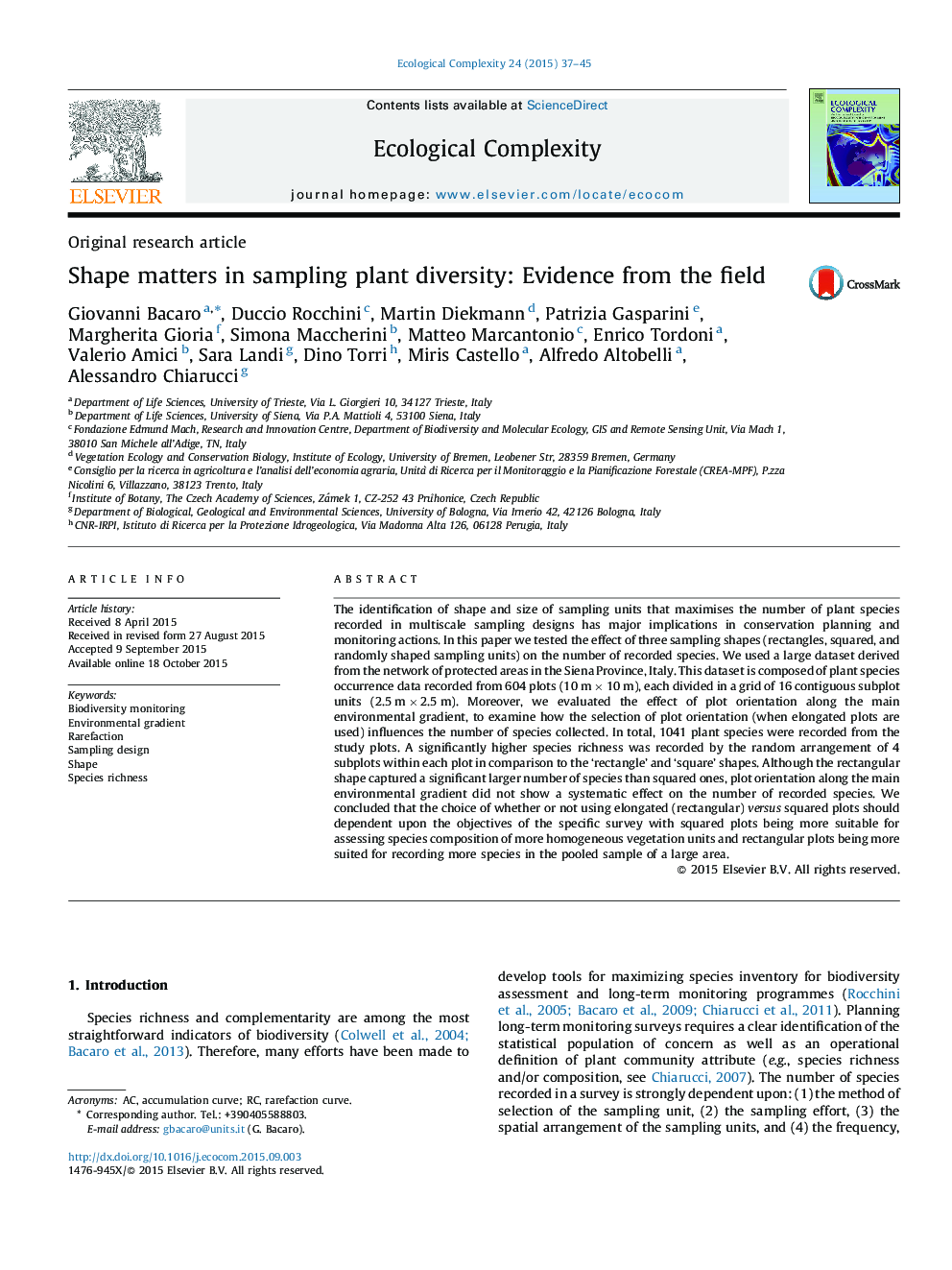| کد مقاله | کد نشریه | سال انتشار | مقاله انگلیسی | نسخه تمام متن |
|---|---|---|---|---|
| 4372426 | 1617090 | 2015 | 9 صفحه PDF | دانلود رایگان |
• We tested the effect of sampling unit shapes on the number of plant species.
• We evaluated the influence of plot orientation on the number of species collected.
• We found that shape and orientation of plots affect the number of species collected.
• Rectangles capture more species than squares, independently of the orientation.
• Information on plot shape is central for cost-effective surveys.
The identification of shape and size of sampling units that maximises the number of plant species recorded in multiscale sampling designs has major implications in conservation planning and monitoring actions. In this paper we tested the effect of three sampling shapes (rectangles, squared, and randomly shaped sampling units) on the number of recorded species. We used a large dataset derived from the network of protected areas in the Siena Province, Italy. This dataset is composed of plant species occurrence data recorded from 604 plots (10 m × 10 m), each divided in a grid of 16 contiguous subplot units (2.5 m × 2.5 m). Moreover, we evaluated the effect of plot orientation along the main environmental gradient, to examine how the selection of plot orientation (when elongated plots are used) influences the number of species collected. In total, 1041 plant species were recorded from the study plots. A significantly higher species richness was recorded by the random arrangement of 4 subplots within each plot in comparison to the ‘rectangle’ and ‘square’ shapes. Although the rectangular shape captured a significant larger number of species than squared ones, plot orientation along the main environmental gradient did not show a systematic effect on the number of recorded species. We concluded that the choice of whether or not using elongated (rectangular) versus squared plots should dependent upon the objectives of the specific survey with squared plots being more suitable for assessing species composition of more homogeneous vegetation units and rectangular plots being more suited for recording more species in the pooled sample of a large area.
Journal: Ecological Complexity - Volume 24, December 2015, Pages 37–45
